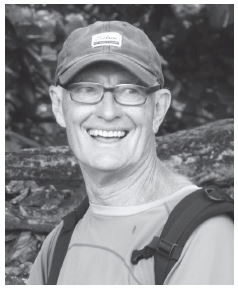Dr Gilbert (Gil) Edgar Dyck, 1942–2014

Dr Gilbert (Gil) Dyck passed away on 12 March 2014 after having battled multiple myeloma for more than 4 years. His life was celebrated at a heartwarming ceremony at Crescent Beach in BC. Dr Dyck spent his career as an emergency physician at the Royal Columbian Hospital in New Westminster from 1973 until his retirement in 2010. During a short interlude (1999 to 2003) he and his wife, Marion, spent time in Saudi Arabia where Dr Dyck worked in the emergency department at the King Faisal Specialist Hospital and Research Centre in Riyadh.
Gil was born in Kitchener, Ontario, in 1942 and lived there until moving with his Mennonite family to Yarrow, BC. After spending some time in Vancouver the family moved to New Westminster, where he met his high school sweetheart, Marion Pepper.
The son of a high school math teacher, Gil graduated with an honors math degree in 1964 from the University of British Columbia. As well, coming from a strong Mennonite background, it was a natural fit for Gil to become a Young Life leader. Gil was a Christian mentor for many young people whose lives were deeply affected by his compassion and wisdom. While still working with Young Life, Gil and Marion married in 1966. In 1967 he returned to UBC to complete his science requirements and entered medical school the following year at the University of Alberta. Always willing to get involved, Gil became interested in student politics concerning academic grading and the influence of the pharmaceutical companies.
Eventually, New Westminster drew him back and he became an intern at the Royal Columbian Hospital. Following his internship Dr Dyck became an integral member of the emergency department, which was in the process of developing full-time medical staff. Over the next 10 years the Royal Columbian group was instrumental in developing emergency medicine as a specialty. The group initiated developments in emergency medical services with paramedic training, air ambulance services, and ACLS and ATLS programs. It was only fitting that after being an integral part of emergency medicine’s development Dr Dyck obtained his FRCP (EM) in 1983 and became one of the few original EM specialists. As any superstar does, Gil had the ability to slow down the game and make those around him—colleagues and co-workers in the emergency department—better.
While all that was going on, he and Marion had three wonderful daughters, Kristin, Lindsay, and Ashley, who were instilled with Gil’s enthusiasm and zest for life with a bite of competitive spirit. This enthusiasm led to many biking, hiking, skiing, and kayaking adventures along with a great deal of piano playing, photography, and enjoying the company of his and Marion’s many friends. Gil was very proud of his girls and his grandchildren, who all share his love and joy for life.
Gil died at home overlooking the ocean, listening to music, and surrounded by his family. He is survived by his wife, Marion; daughters, Kristin (Pat), Lindsay (Dave), and Ashley (Johnny); sisters, Lea, Gerda, and Myrna; and grandchildren, Sam, Elle, Sierra, Stella, Tyler, and Sebastian. He was predeceased by his brother, Walter.
—Paul Zickler, MD
Surrey
